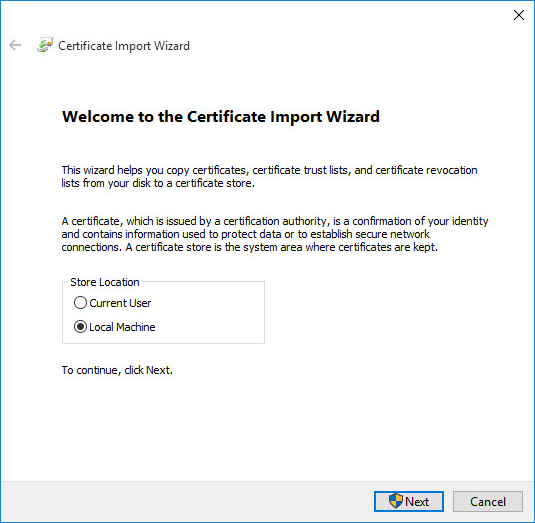
#Ipsec windows client keygen#

IPv6 (not yet available at Cornell) includes IPsec automatically no configuration necessary. It is simpler if you can limit the use to Windows. Linux/OS X can do IPSEC, but it requires 3 rd party clients. It is fine as a one-off solution, but it isn’t suitable in an enterprise environment unless everyone is sharing the same settings. However, there is only one policy per system, and it can’t be merged like firewall rules through group policy. For systems that can’t be upgraded, it is possible to use the IPsec policy on the system. Instead of the Computer Certificate, use the pre-shared key.įor systems older than Vista, this is not supported. Preshared keys are stored in plaintext on the client/server, but it is still useful to secure traffic on the wire. This is the encrypted communication.įor non-domain attached systems, use a preshared key. In Windows Firewall -> Security Associations -> Quick Mode, you should see a new association with ESP Encryption. On the client, test the connection to the server to confirm that it is working. In Profile, leave all the profile boxes clicked, and then click Next. Select the Remote port (in this example, SMB: TCP 445), and then click Next. In Profile, leave all the profile boxes clicked and, then click Next.Ĭreate a new firewall rule by selecting Outbound Rules-> New Rule… Select Require the connections to be encrypted, and then click OK. Select Allow the connection if it is secure, and click Customize. Select the ip addresses/ranges this rule applies to, and then click Next. Select the serverside inbound port (in this example, SMB: TCP 445) and click Next. Select All Programs, and then click Next. Right-click Inbound Rules, and then click New Rule.

This means that there is authentication as to the validity of the sender, but the data itself is not being encrypted with IPSEC. In the Monitoring section of the Windows firewall, under Security Associations->Main Mode, you should now see an authentication between the two machines.Īlso note in the Security Associations, under Quick Mode, ESP Encryption is set to None. Note: There might be a slight pause with your connection as the security association happens. Test your connection to make sure it still works. (Everything is identical, including the IP ranges and Endpoint 1 and 2). Repeat the server side setup (steps 3-14 above in the Create a Connection Security Rule procedure) for the client. Set Up the Client-side Security Association In the When does this rule apply box, leave all the boxes checked, and then click Next. Since Endpoint 1 is the server, only define the port on Endpoint 1. In the To which ports and protocols does this rule apply box, select the ports/protocols for your service (we will use SMB, TCP 445 for this example), and then click Next. You'll see the New Connection Security Rule Wizard: Authentication Method window again, click Next. In Customize Advanced Authentication Methods, click OK. In Add First Authentication Method, select Computer certificate from this certificate authority and then do the following: In First Authentication Method, click Add. In the Authentication Method box, select Advanced, and then click Customize. Select Require authentication for inbound and outbound connections, and then click Next. In the Which Computers are Endpoint 2 box, enter the client(s) IP address or range. Which Computers are Endpoint 1 box, enter the server(s) IP address or range.In the Endpoints window, do the following: Right-click Connection Security Rules and then click New Rule. Open Windows Firewall with Advanced Security. Note: The default refresh of group policy is 90 minutes.Ĭreate a Connection Security Rule on the Server Make sure the policy is applied on your servers.

Link the Group Policy Object (GPO) to any OU where you will be using IPsec.Īll ServerFarm machines should have this policy linked already. Identity Management has a policy called "CIT-IDM-MachineCertificateAutoEnrollment." This enrolls any machine in the OU in the machine-based IPsec cert automatically. Using Windows Firewall with Advanced Security, CornellAD Domain AttachedĬomplete all of the procedures on this page. Maybe TCP/UDP 88 (if you are authenticating) It allows you to add IP restrictions, and TCP/UDP level encryption to applications which may not otherwise support it. To fulfill security requirements, or simply enhance the security of your application. IPsec also includes protocols for establishing mutual authentication between agents at the beginning of the session and negotiation of cryptographic keys to be used during the session. Wikipedia: Internet Protocol Security (IPsec) is a protocol suite for securing Internet Protocol (IP) communications by authenticating and encrypting each IP packet of a communication session.


 0 kommentar(er)
0 kommentar(er)
